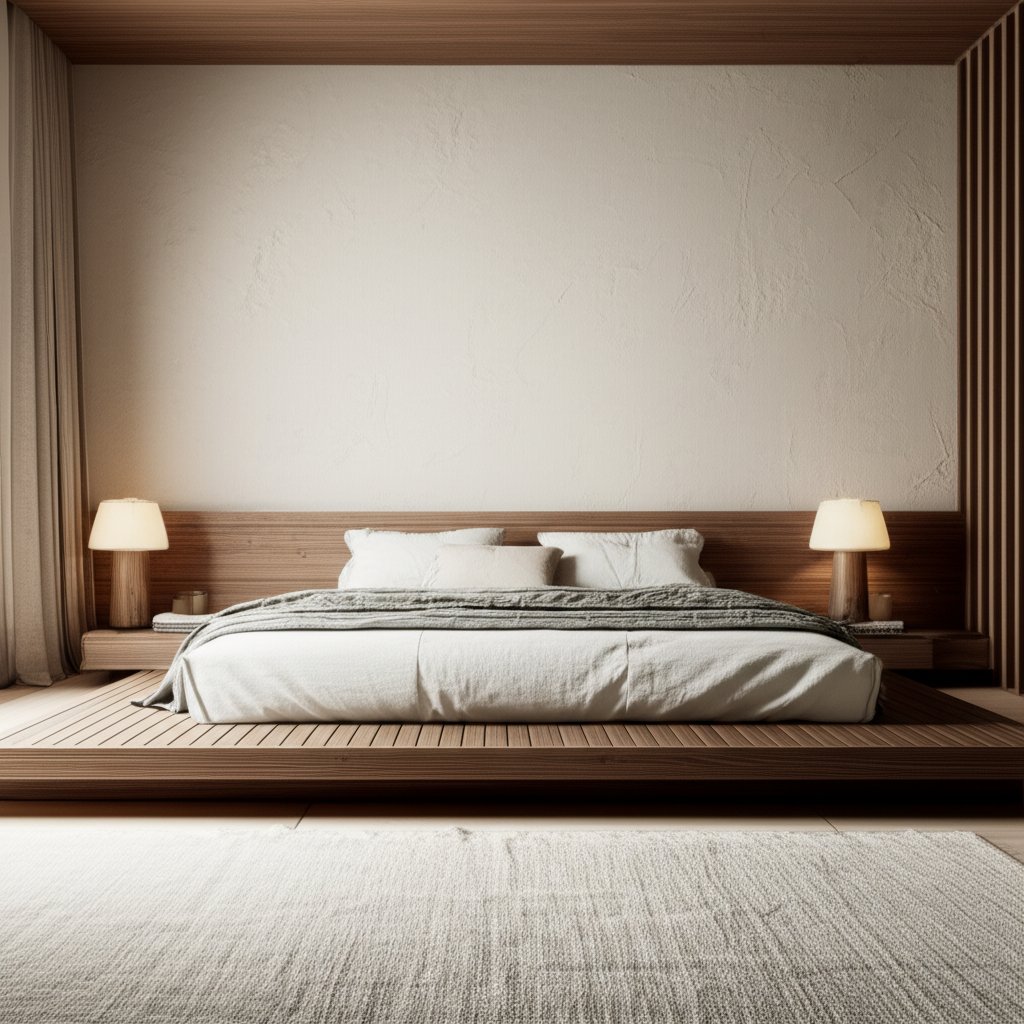Introducing Wabi-Sabi to Japandi Bedrooms
Emma and Kai purchased a modest coastal home where their bedroom appeared stark and incomplete. Plain white walls surrounded a simple bed frame and scattered remnants from their student years. The room served its purpose, yet it missed the inviting warmth that prompts relaxation upon entry. They sought tranquility without harsh sterility, a minimalist aesthetic that retained human elements. Their solution emerged from merging Japandi principles with wabi-sabi textures.
Japandi design draws from Japanese and Scandinavian traditions, emphasizing clean lines and natural light. Wabi-sabi enhances this foundation by embracing imperfection and transience. The resulting bedroom prioritizes sensory experiences over flawless uniformity, focusing on materials that evolve with time.
The Limitations of Smooth Japandi Surfaces
Traditional Japandi bedrooms often feature polished finishes and precise forms. Lacquered wood and crisp linens maintain order, but they can evoke a clinical atmosphere. Light reflects sharply without lingering, leaving the space detached.
Emma recalled mornings when the room resembled an unopened hotel suite. It lacked the tactile narratives found in textured walls or fabrics. To achieve grounding, the design required layers of irregularity and depth.
Core Principles of Wabi-Sabi in Bedroom Design
Wabi-sabi aligns with Japandi by valuing simplicity, yet it introduces acceptance of flaws. In practice, this allows a handcrafted nightstand to pair with a sleek lamp. An asymmetrical ceramic vase might display a single dried branch, offering visual respite through authenticity.
Textures guide the gaze deliberately. The wood's grain, fabric's weave, or plaster's subtle strokes demand attention. These elements encourage physical interaction, forging a deeper bond with the surroundings. Wabi-sabi thus restores a sense of presence in daily life.
Practical Ways to Incorporate Textures
Select materials that age gracefully to build a resilient bedroom. Rough plaster walls absorb light softly, creating a matte glow. Raw oak nightstands reveal natural knots, adding character without overwhelming the space.
Layer linens in neutral tones for bedding; choose cotton or hemp that wrinkles naturally. Position a woven wool throw at the foot of the bed to introduce subtle heft. For lighting, opt for clay or ceramic lampshades that diffuse warmth unevenly.
Incorporate handmade ceramics on shelves. A slightly irregular bowl or vase invites contemplation. These choices ensure the room supports restful routines while concealing minor wear.
Textures in Everyday Bedroom Routines
Wabi-sabi textures influence morning preparations and evening unwinding. Emma folds linens loosely, preserving their organic creases as intentional details. Kai positions a book near the bed, where lamplight highlights the wall's faint imperfections like gentle brushstrokes.
The environment promotes unhurried paces. Maintenance demands less effort, as patina enhances appeal. A subtle mark on wood or softened fabric edges signals use and affection.
For households with children, textured surfaces prove forgiving. Sturdy wool rugs withstand play, while linen duvet covers hide fingerprints. Materials develop richness over years, supporting sustainable living.
Sensory and Emotional Benefits of Textural Layers
Beyond sight, textures engage touch and emotion. A ceramic mug's grit contrasts with smooth alternatives, subtly uplifting routines. In bedrooms, linen's gentle friction soothes skin, while unfinished wood offers cool stability.
Woven elements provide rhythmic patterns that calm the mind. This design fosters humility, recognizing beauty in raw forms. The space reflects life's complexities: multifaceted, flawed, and inherently serene.
Building and Evolving Your Textured Sanctuary
A wabi-sabi Japandi bedroom adapts over time. Wood tones warm with exposure, fabrics yield to handling, and accents rearrange organically. Introduce pieces gradually to maintain harmony.
Begin by assessing personal preferences. Does oak's grain comfort you, or does clay's smoothness appeal more? Experiment with one wall in plaster or swap bedding for natural fibers.
Observe interactions: how sunlight filters through linen panels or shadows accentuate weaves. These moments cultivate lasting ease. The design invites ongoing refinement, accumulating depth and personal significance.



